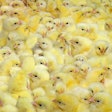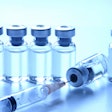
Hydroxyl-radical sanitizing technology could be used to inactivate a wide range of bacteria in the poultry industry, such as Salmonella, Pseudomonas, Escherichia coli and Aspergillus.
According to Paul Moyer, co-owner, cleaning technology company Clean Works Corp., the Clean Works technology can be used on a variety of surfaces, but first was introduced to the poultry industry as an alternative sanitizer for hatching eggs.
Formaldehyde is the primary disinfection agent used for hatching eggs in the U.S. The agent can be a hazard to workers, inconsistent, time consuming and may negatively impact chick health, explained Keith Warriner, professor, food science, University of Guelph, at the 2023 Poultry Tech Summit. Additionally, European countries are starting to ban the use of formaldehyde in hatcheries, and the U.S. could in the future.
However, a continuous flow process that uses a combination of hydrogen peroxide, ozone and UV light to decontaminate could benefit the poultry industry and help it move away from formaldehyde.
How the technology works
The process uses hydroxyl-radicals, which are short lived antimicrobial agents that can inactivate and kill bacteria. The hydroxyl-radicals are created from the UV-C mediated degradation of hydrogen peroxide vapor and ozone gas.
According to Warriner, the process takes approximately 10 seconds, leaves no residue and does not impact quality or embryo development in hatching eggs. Additionally, in a validation study conducted with over 7,000 hatching eggs, the chicks treated with the hydroxyl-radical process showed approximately an 80% decrease in seven-day mortality compared to control birds.
One of the main advantages of the technology is that it is waterless, and according to Moyer, water is a source of cross-contamination and an ongoing cost to poultry operations.
Moyer added that the process is versatile and could be used by growers, shippers, processors, wholesalers and retailers to decontaminate bins or containers used for transportation and storage.


















